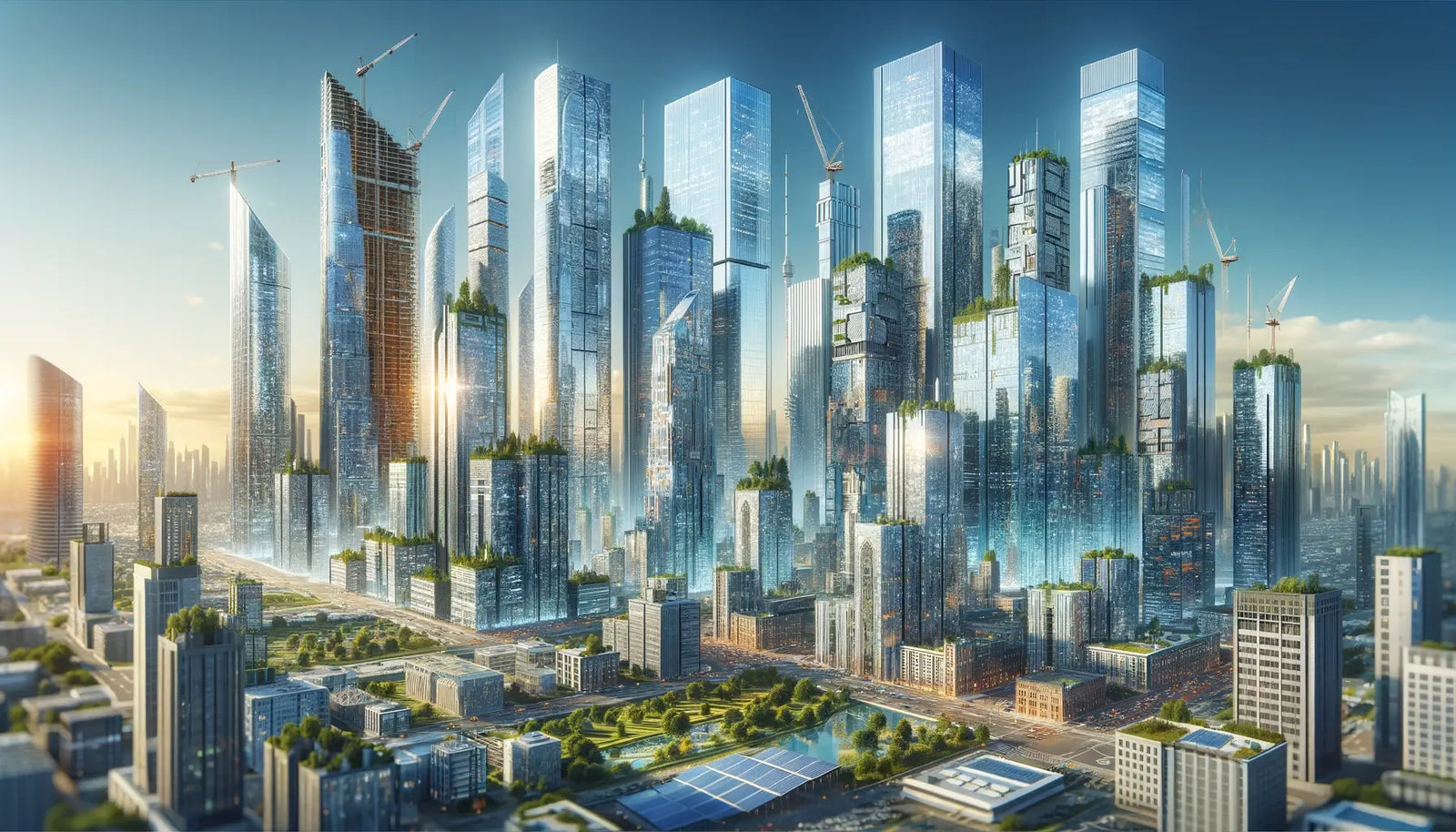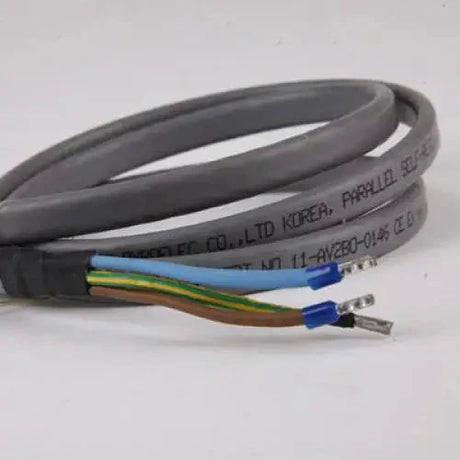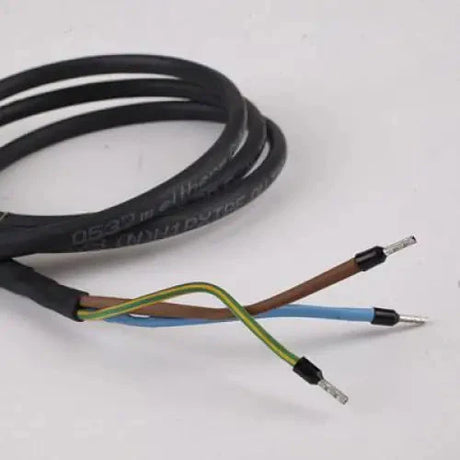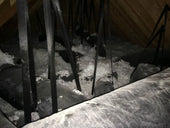Skyscrapers define our cityscapes, reaching ever higher into the heavens with their impressive, impenetrable facades. Yet, these towering structures also embody feats of engineering and energy efficiency. With climate change and escalating energy costs, the efficiency of skyscrapers is not just a luxury; it's an imperative. At the heart of this efficiency lies the unsung hero: insulation. The materials and technologies used to insulate these megastructures directly impact their energy consumption, carbon footprint, and the overall comfort of their occupants.
Energy efficiency in skyscrapers isn't just about cost-saving; it's a pivotal aspect of sustainable architectural design. The proper insulation is critical in creating buildings that harmonize with our environmental commitments while continuing to serve our urban needs. Without a doubt, insulation is the cornerstone of energy conservation in our modern colossi.
The Role of High-Performance Insulation in Energy Efficiency
Insulation represents an invisible barrier against energy loss, a shield that keeps the internal environment of a skyscraper stable despite external temperature fluctuations. This thermoregulation translates directly into energy savings, as heating and cooling systems need not work overtime to compensate for heat gain or loss. Advanced insulation materials and systems are therefore essential for reducing operational costs and enhancing the energy efficiency of high-rise buildings.
The advancements in insulation technology go beyond just improving thermal performance. They encompass fire-resistance, sustainability, and integration with smart building systems. Together, these innovations are reshaping what it means to build upwards, ensuring that our vertical cities are as eco-friendly as they are awe-inspiring.
Innovations in Insulation Materials
Phenolic and PIR Insulation
- Phenolic insulation boasts superior thermal efficiency thanks to its low thermal conductivity, which makes it a staple in the construction of energy-efficient skyscrapers.
- PIR (polyisocyanurate) boards are another high-performer, valued for their excellent strength-to-weight ratio and impressive insulating properties that meet stringent building codes.
These materials are the linchpins in a skyscraper's insulation system, ensuring that the colossal energy required to heat and cool these structures is kept within reason. Their application is not just limited to the facade but extends to other crucial areas where thermal bridging must be minimized.
High-Temperature and Fire-Resistant Solutions
The dangers of fire in a skyscraper cannot be overstated, making fire-resistant insulation an essential part of construction:
- High-temperature insulation is designed to withstand extreme heat, contributing significantly to the building's overall safety profile.
- Mineral wool insulation emerges as a hero in this domain, offering not just fire resistance but also sound-absorbing qualities for heightened occupant comfort.
These dual-purpose solutions take on two critical issues—energy efficiency and fire safety—proving that modern insulation is about comprehensive protection.
Sustainable and High-Efficiency Alternatives
Leading the charge in sustainability are green insulation materials that lower energy usage and foster a healthier environment:
- Kingspan insulation delivers on the promise of green building, with products designed to achieve maximum thermal efficiency and minimal environmental impact.
- The attributes of polyurethane insulation include high energy efficiency and durability, which serve to enhance the sustainability of skyscraper design further.
These eco-friendly options are crucial in the push for greener cities and are a testament to the insulating industry's commitment to the planet.## Insulation Design in Skyscraper Architecture
When we think of insulation, it's not just what's within the walls that counts. How insulation integrates with architectural elements can significantly influence a building's performance. This merger of form and function becomes even more prominent in the grand scales at which skyscrapers operate.
Integration with Architectural Elements
- Aluminium cladding helps to encapsulate a building's envelope with a sleek, reflective surface, providing not just weather protection but also enhanced thermal insulation properties.
- Through the use of advanced insulation cladding systems, architects and engineers balance the demands of aesthetics with the imperative of energy efficiency.
The seamless integration of these cladding systems with contemporary insulation materials ensures that skyscraper facades are not only visually stunning but also serve as an active barrier against energy loss, sound transmission, and environmental elements.
Internal Insulation Solutions
But it's inside the towering walls of glass and steel where insulation really works its quiet magic:
- The application of floor insulation in a skyscraper is a crucial component of the internal climate control system, particularly in managing the vast heat that can rise through the building.
- Additionally, foam pipe insulation ensures that heat is efficiently transported through the HVAC system without unnecessary loss, contributing to the overall energy efficiency of the skyscraper.
Every layer of insulation, every strategic installation contributes to a cumulative effect: a highly efficient, comfortably regulated environment that rises hundreds of meters above the ground.
Case Studies: Skyscrapers Embracing the Insulation Revolution
It's one thing to discuss the potential of modern insulation; it's another to see it in action. Across the globe, towering icons of glass and steel are rising, not just in height but in energy efficiency too. Let's take a peek at some of these avant-garde giants:
- Skyscraper A: Utilizing a combination of phenolic and PIR insulation, this skyscraper has seen a substantial reduction in energy consumption, setting new standards for skyscraper design.
- Skyscraper B: Thanks to the application of high-temperature insulation and mineral wool, this building not only boasts an impeccable fire safety rating but also showcases a recommendation for soundproofing efficiency.
Each of these examples (which can be found often side-by-side in many cities) highlights the tangible benefits of investing in top-tier insulation. Energy savings, safety improvements, and enhanced occupant comfort are just some of the benefits that these skyscrapers experience, thanks to the cutting-edge insulation solutions they've embraced.
Future Directions in Energy-Efficient Skyscraper Design
As we gaze out towards the horizon of high-rise construction, we see an industry on the brink of revolutionary change. The skyscrapers of tomorrow will not just reach higher, but will also be smarter and more efficient than ever before.
Prominent trends informing the future direction of skyscraper design include:
- The incorporation of smart insulation solutions: Materials that adapt to the external environment to offer optimal thermal resistance.
- The exploration of new materials: Nanotechnology and phase-change materials poised to set new benchmarks in insulation technology.
These are not mere speculations but emerging realities drawn from the rich wellspring of research and innovation that continuously fuels the construction industry. We stand on the cusp of a new era, where our towering edifices will not just scrape the skies but also tread lightly on our precious Earth.
Conclusion
Improvements in insulation products and practices represent a leap forward in our ability to construct skyscrapers that are as energy-efficient as they are emblematic of human achievement. The insulation breakthroughs are revolutionizing energy efficiency in skyscrapers, creating not just landmarks, but benchmarks in sustainable design.
The implications extend beyond the buildings themselves and into the broader agenda of urban planning and climate change mitigation. As these technologies improve and become more accessible, we can expect a ripple effect that will transform the face of our cities.
Call to Action
The skyline is changing, not just in silhouette but in the very essence of what makes a modern skyscraper. It's a change driven by the relentless push for greater energy efficiency—a characteristic indispensable in the architectural titans that occupy our urban terrains. We've journeyed through the role of insulation in achieving these lofty goals, explored the latest material innovations and design methods, and celebrated the real-world edifices that embody these advancements. Now, it's time to turn insights into action.
As stakeholders in the future of our built environment—from architects and developers to contractors and building owners—it's crucial to capitalize on these breakthroughs in insulation technology. Whether you're at the helm of a new project or retrofitting an existing structure to meet the demands of the 21st century, the suite of advanced insulation solutions is key to realizing your vision of efficiency and sustainability.
Here are the steps you can take today:
- Evaluate Your Needs: Assess the specific insulation requirements of your project, taking into account factors such as climate, building design, and energy goals.
- Research Solutions: Explore the range of insulation materials that can meet your specifications. Consider not only thermal performance but also fire resistance, sustainability, and acoustic properties.
- Consult with Experts: Engage with insulation professionals who can provide valuable insights and recommendations tailored to your skyscraper's unique challenges.
- Invest in Quality: Prioritize high-quality insulation products that deliver on their promise of enhanced energy efficiency over the building's lifespan.
- Stay Informed: Keep abreast of the latest in insulation technological advancements to ensure your decision-making is driven by the most up-to-date information.
The towering testaments to human ingenuity, the skyscrapers of our world, have much to gain from these insulation breakthroughs. Seizing these opportunities not only makes commercial sense but also aligns with a greater ethical trajectory towards sustainable development. The technology is here, and the benefits—reduced energy costs, improved safety standards, and a smaller carbon footprint—are within reach.
By choosing to incorporate products such as insulation sheets and other innovative solutions into your skyscraper's design, you are choosing to lead rather than follow in the march towards a more energy-efficient tomorrow.
The architects of the future are those who will dare to embrace these advancements, to weave the promise of a greener and more efficient future into the very fabric of our built environment. Will you be one of them? Explore our collections, consult with our experts, and step into the forefront of energy-efficient skyscraper design. The future is not just knocking; it's pressing the elevator button to the penthouse suite.
For more information or to delve deeper into the world of cutting-edge insulation, visit our comprehensive collection pages and become a part of the insulation revolution.
- Phenolic Insulation
- PIR Insulation Boards
- High-Temperature Insulation
- Mineral Wool Insulation
- Kingspan Insulation
- Polyurethane Insulation
- Aluminium Cladding
- Insulation Cladding
- Foam Pipe Insulation
Don't settle for the status quo. Redefine what it means to reach for the sky.
Key Takeaways
| Key Takeaways | Details |
|---|---|
| Importance of Insulation | Insulation is a cornerstone of energy conservation and plays a fundamental role in energy efficiency and sustainability in skyscrapers. |
| Role of Advanced Insulation | High-performance insulation acts as an invisible barrier that stabilizes internal environments, resulting in energy savings and operational cost reductions. |
| Technological Advancements | Modern insulation technologies enhance thermal performance and contribute to fire resistance, sustainability, and integration with smart building systems. |
| Innovations in Insulation Materials | - Phenolic and PIR boards offer superior insulation and fire safety. - High-temperature and mineral wool insulations provide fire resistance and sound absorption. - Green insulation alternatives like Kingspan and polyurethane promote sustainability. |
| Integration with Architectural Elements | Using materials like aluminium and insulation cladding balances aesthetics with energy efficiency, improving building envelope performance. |
| Internal Insulation Solutions | Floor insulation and foam pipe insulation ensure efficient heat management and HVAC system performance within skyscrapers. |
| Real-World Applications and Case Studies | Examples of skyscrapers that have effectively integrated advanced insulation technologies demonstrate tangible benefits such as reduced energy consumption and improved safety. |
| Future of Skyscraper Energy Efficiency | The incorporation of smart insulation solutions and new material technologies like nanotech and phase-change materials herald the next wave of energy-efficient skyscraper design. |
| Call to Action | Stakeholders are encouraged to assess, research, consult, and invest in high-quality insulation products to meet the needs of contemporary and future skyscraper projects for sustainability and efficiency. |
| Comprehensive Insulation Collections | For more information on cutting-edge insulation solutions, readers can visit the collection pages such as Phenolic Insulation, PIR Insulation Boards, High-Temperature Insulation, and others. |
























































